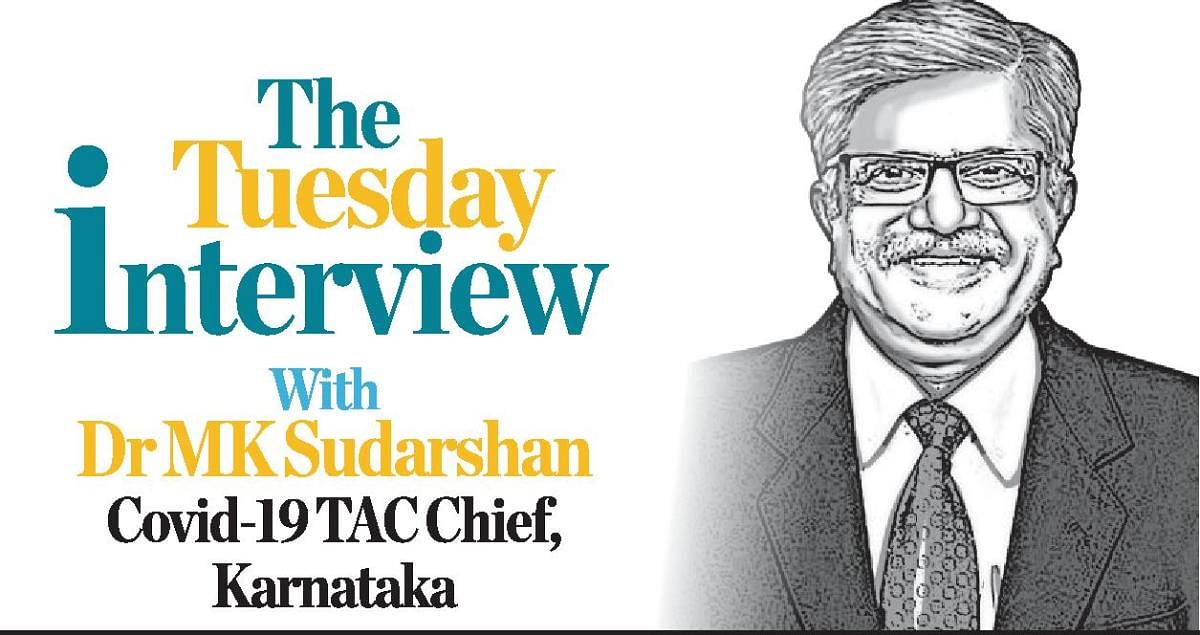
Amidst the Omicron scare in the country, the chairman of the Karnataka Covid-19 Technical Advisory Committee, Dr M K Sudarshan tells DH’s P Suraksha that the state is prepared in terms of hospital facilities in case of a third wave of the pandemic.
Despite the detection of three patients with the Omicron variant, no clusters have been seen in Bengaluru. What does this mean for the city and the state at large?
It is good that no more cases of Omicron have been seen despite a good testing rate of over one lakh per day, tracing, tracking and follow-up genomic sequencing as per national guidelines. It means there has been no spread or occurrence of new cases of Omicron.
Should we be worried about community transmission as one of the three with Omicron, a doctor, did not have a travel history, and the civic body is nowhere close to detecting the source of his infection?
The said doctor had attended an international conference previously, and also, it may not be possible to identify the source when the cases occur sporadically. Hence, absence of evidence is not evidence of absence!
Should the state be worried about other likely new variants that might emerge?
Virus mutations are a normal phenomenon and the SARS-CoV-2 virus is no exception. However, there is now a fairly well-established good genomic surveillance in the country that has the ability to catch a new variant quite quickly. That should not be a worry.
In South Africa, where the Omicron outbreak was first detected, hospitalisations and ICU admissions have risen in the last week. What is the likely impact of such heavily mutated viruses on the daily life of societies?
Virus mutations do not always result in severe disease and death. We have the examples of flu, SARS and H1N1 before us. Also, in South Africa, the cases of Omicron that have needed acute or intensive care is lower than during the previous waves of the pandemic (caused by other variants of the virus). Besides, the two-dose vaccination coverage in South Africa is lower (27 per cent) than that in India (37 per cent).
What are the precautions one can take apart from double-masking, getting fully vaccinated, social distancing and maintaining hand hygiene?
Firstly, there is no need for double-masking by general public. Wearing a clean, right-fit face mask correctly, covering the mouth and nose, is good enough. It is generally advisable to have natural ventilation and avoid air conditioning. Also, one should avoid indoor congregations of persons for long durations involving singing, loud talking, such as at social get-togethers, music concerts, marriages, etc., and in closed spaces, where there is poor air circulation. One should avoid non-essential travel, and moving in crowds, particularly in poorly ventilated areas like closed spaces, narrow passages, etc.
What is the clinical preparedness of the state in the light of Omicron, in terms of beds, equipment, drugs, training of nurses, and doctors?
Following the second wave of Covid-19 in the state, at the behest of the TAC, the Karnataka government in June constituted an expert committee under the chairmanship of Dr Devi Shetty that provided the guidelines of clinical preparedness for a possible third wave in the state. Based on this report and further expert deliberations, the state is well geared-up to face any situation.
Out of 6,273 samples sequenced over the past five months, as many as 4,524 were sequenced at two private labs and 1,749 at NIMHANS and NCBS. Will genomic sequencing of Covid samples take a hit, considering that the government has mandated sequencing to be done in Indian SARS-CoV-2 Genetics Consortium (INSACOG) labs alone? The INSACOG network has not inducted any private labs so far.
The inclusion of private laboratories in the INSACOG network is to be decided on in Delhi by the Indian Council for Medical Research (ICMR) and the Government of India. The decision will apply to the whole of the country.
Recently, the Union government pulled up the state for an uptick in cases in several districts. Is this the beginning of a third wave? Do you find the prediction made by an expert from IIT Kanpur that the third wave is likely to begin in February credible? The model is under criticism for predictions made on limited data.
When something new happens, there is a buzz and sometimes mass frenzy, more so in the case of Covid-19, following the unprecedented bad effects on the life and livelihoods of the people, not only in India but the world over. Moreover, a model is as good as the data that is used to generate the output. As Omicron is known to be highly infectious and has popped up on the horizon just when a third wave is anticipated in India, it is quite natural that all kinds of predictions are made about the third wave.
Check out the latest DH videos here:
Deccan Herald is on WhatsApp Channels| Join now for Breaking News & Editor's Picks
